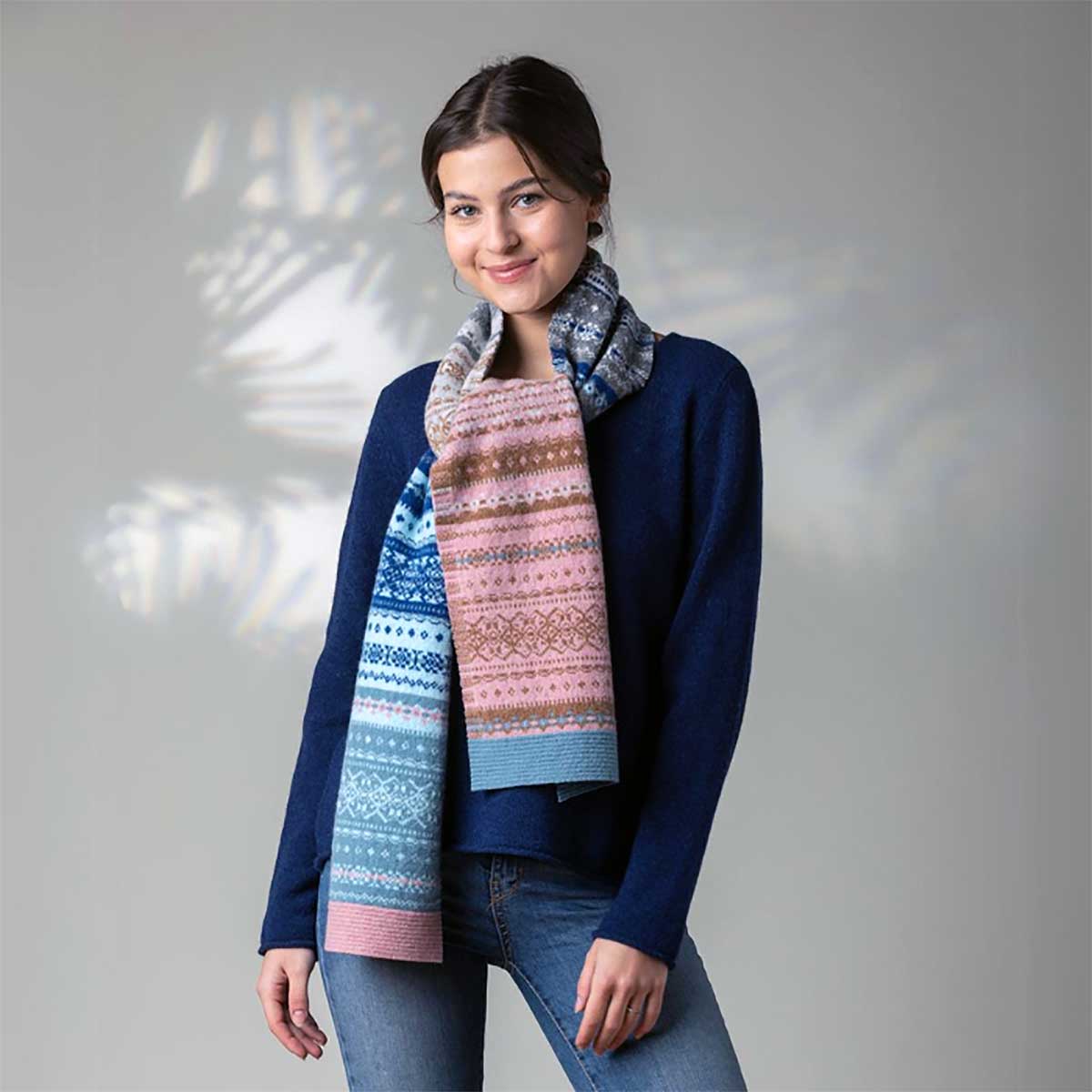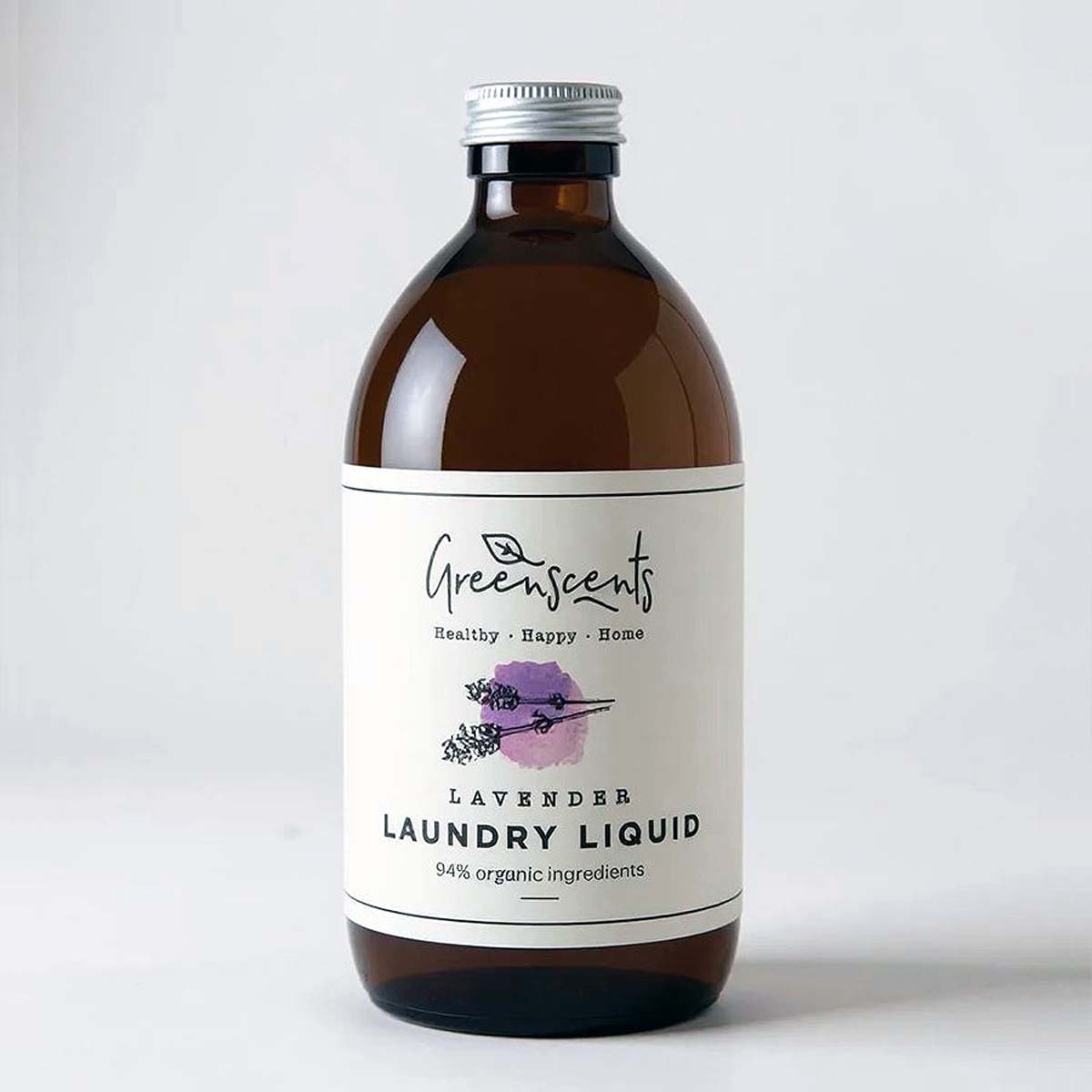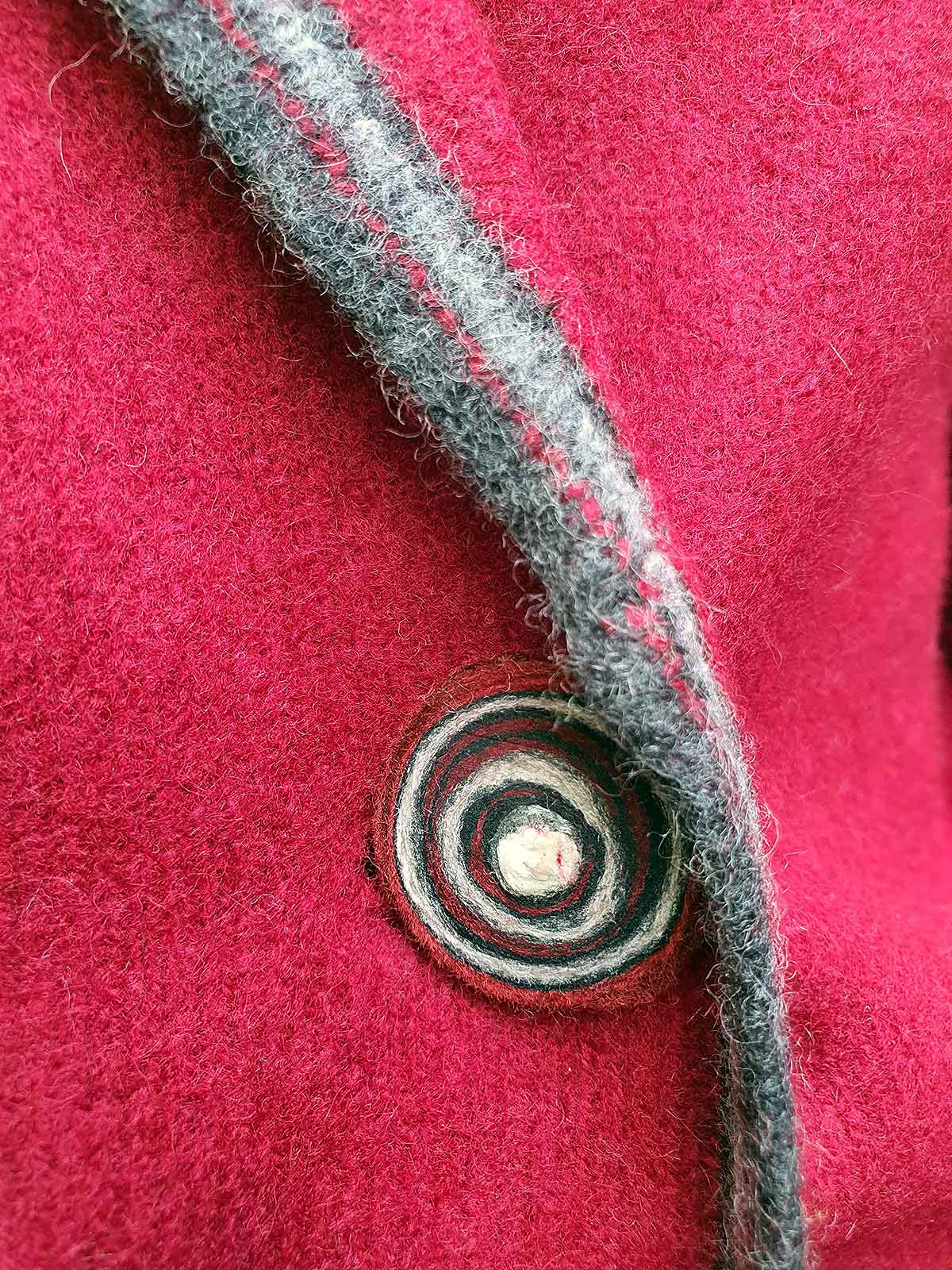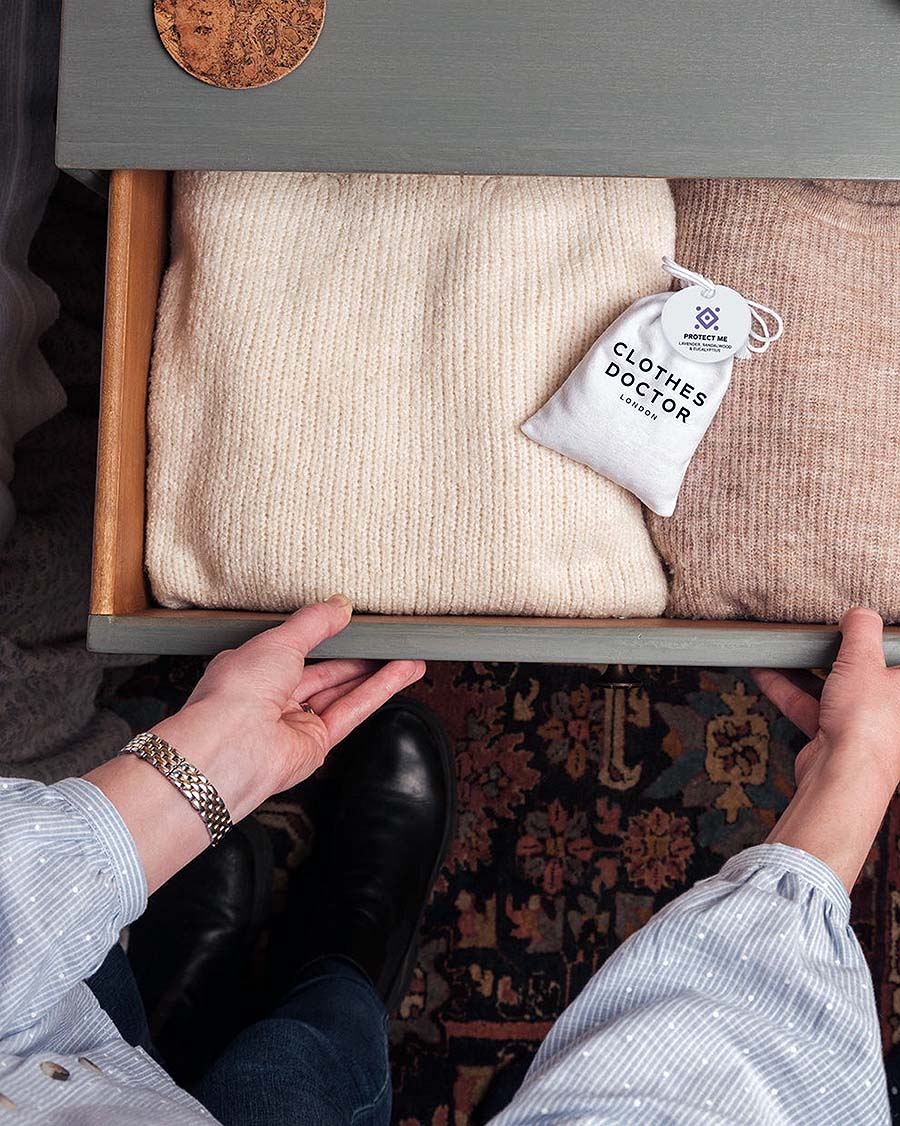WASHING
Wash wool less often because it has natural antibacterial properties and is naturally stain, odour, and water repellent. Usually, we wear woollen garments over another layer (we recommend natural fibres over synthetic to avoid sweating). Garments can be refreshed simply by hanging them outside in the fresh air.
Handwashing is recommended. Turn your garment inside out, use liquid hand soap such as Greenscents lavender laundry liquid (NOT regular biological powder), and soak in lukewarm water (around 30 degrees) for 5 minutes only. Gently squeeze, not rub, and rinse in cool water with a few drops of almond oil for fragrance and wool restoration (NOT fabric conditioner). Do not wring or twist. Roll the damp garment in a towel to remove excess water, then reshape and dry flat on a clean towel (hanging a heavy, wet woollen garment will cause it to stretch and become misshapen), away from direct heat sources.
If you must wash your woollens in the washing machine, turn them inside out before placing them in a mesh laundry bag for extra protection. Avoid washing with heavier fabrics that can cause abrasion. Use the shortest wash cycle with the lowest spin speed.
Ensure the garment is completely dry before storing.
NEVER tumble dry as the high heat will cause the wool fibres to shrink anf felt.
PAULA’S TOP TIPS
Generally, I wash my dark coloured woollens only once a year, when the chill has gone from spring, before storing them (see below). When washing my woollens, I use Greenscents lavender laundry liquid. Lavender is not only a natural moth repellent, but this 94% organic laundry liquid leaves my woollens smelling lovely.
Avoid using your washing machine’s wool cycle. It normally takes far too long for 100% wool, and you will end up with a shrunken garment with matted fibres.
BOBBLING
When you first wear a pure wool garment, loose surface fibres rub together and form little balls of wool known as pilling or bobbling – this is completely normal.
To remove them, gently remove the small pills (from the completely dry garment) either by hand, or with a hand-held sweater comb or razor – NEVER use scissors. By doing this after each of the first 3-4 washes, you will find that the pilling subsides and will eventually disappear.
STORING
Woollen items are better folded than hung up in a wardrobe, as they can stretch when hanging.
Avoid getting any perfumed products on your knitwear as long-term use will make the yarn brittle, leading to breakage. Moths are also drawn to perfume as well as human smells. Typically, moths are active from April to October, so extra care is needed, particularly during the summer months.
During the summer, store clean knitwear in breathable bags made of cotton along with some 100% natural moth repellent scented bags, cedarwood, or herbs, away from the sun and other heat sources. AVOID airtight plastic bags that can trap moisture and cause mildew.
If you find small holes in woollen items, seal them in individual plastic bags and freeze for two weeks (a severe temperature change will kill the moths). Thoroughly air your house, and consider purchasing moth traps until they are eradicated. Only return your woollens to your wardrobe once the moth issue is resolved.
PAULA’S TOP TIP
Have a small bottle of 100% cedarwood essential oil and a small piece of cotton rag handy. Dab several drops onto the rag and wipe over clean open window frames, entrances to wardrobes, drawers and shelves where woollens are stored, regularly reapplying oil to your rag. Keep this rag with your bottle of oil and reapply a few times over the summer months. This helps to keep moths at bay.
Paula Williams, Founder of BRITISH design BRITISH made, 64 High Street, Battle, TN33 0AG, helping you to buy British. What you buy here will not have arrived from far flung places or travelled thousands of miles by air and sea. We use 100% renewable electricity, every drop made from British sun, wind and rain, aim to re-use or recycle at least 90% supplier packaging to reduce landfill, and seek out and promote products that are made with sustainable or recycled materials.




